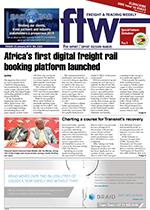T he Port of Maputo has identified Zimbabwe as an area of growth and is confident of increasing its client portfolio from that landlocked country in the year ahead. “In the last quarter of 2018 a number of mining companies approached the port showing great interest in exporting their products via the Port of Maputo,” said a Maputo Port Development Company (MPDC) spokesman. “In the next few months the port is expecting to diversify its portfolio, which will include the procurement of other products from neighbouring countries, such as Zimbabwe. These products include commodities such as grains, general and project cargoes.” One of the major challenges remains the distance from Zimbabwe. “It is 1020 to 1338 km depending on the mining departure point and is an estimated nine days’ train transit,” said the spokesman. “A second challenge that we have is the mixed train of wagons in the Limpopo corridor, which means there is a real lack of dedicated trains for mineral cargo.” But, said the spokesman, the competitive rates offered by the port were increasingly making it a viable option for exporters. “This does help to minimise the supply chain costs for customers. Another opportunity is our storage policy that helps clients to build volumes which in turn ensures they can ship with no constraints.” The Port of Maputo has been investing heavily in its infrastructure, equipment and training as part of its growth strategy. “We expect two new cranes to be arriving by mid-April,” said the spokesman. “We are also in the process of extending the storage capacity.” Commenting on current contracts in Zimbabwe, the spokesman said the port had been working with some of the top ferrochrome and other mineral producers in that country. “Currently Maputo handles ferrochrome and chrome ore. In 2018 it handled 361008 tonnes of these commodities from Zimbabwe alone, of which 91 090 tonnes was ferrochrome and 269 918 tonnes was chrome.
INSERT


